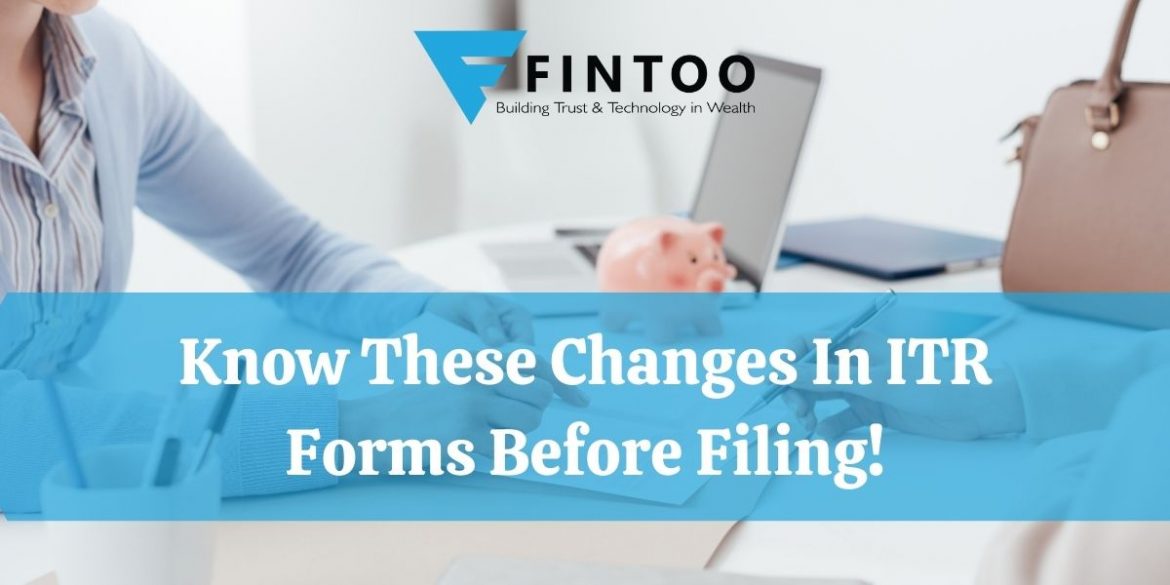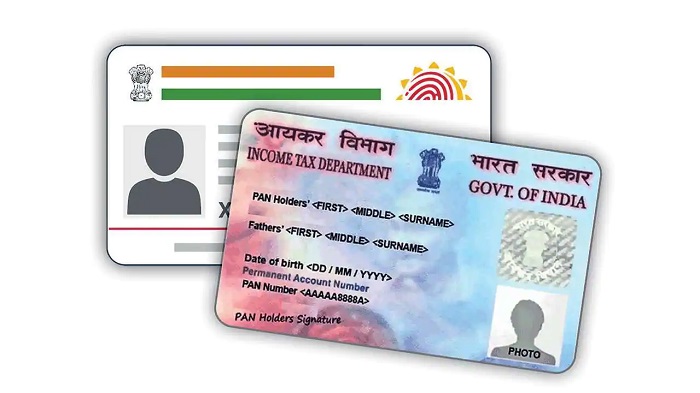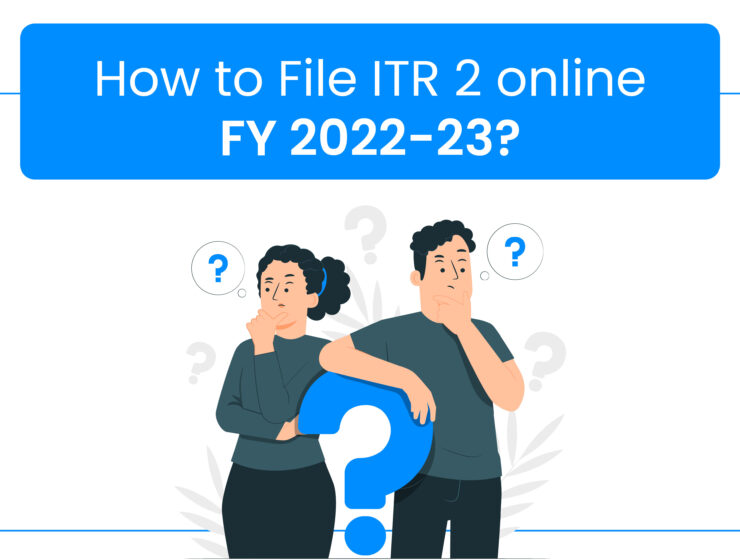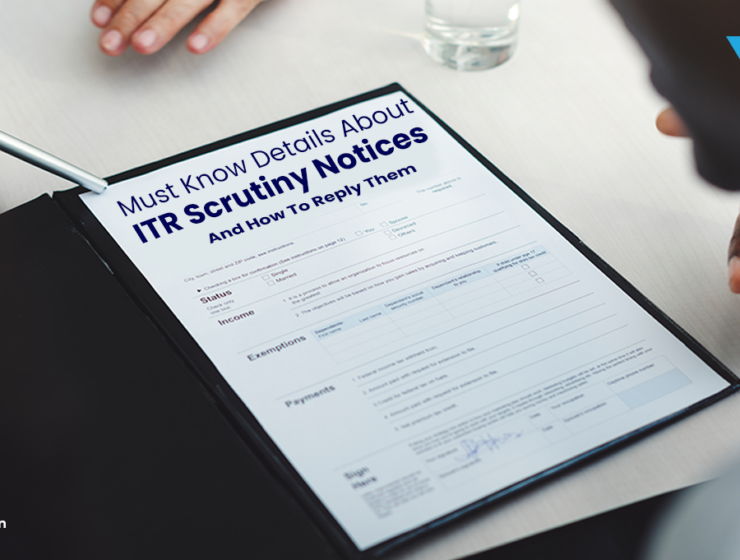

Income Tax Return (ITR) forms are used by every taxpayer to provide details regarding the revenue earned, sources of income and the amount of tax payable. There are seven kinds of forms issued by the Income Tax Department which you can choose from. The Central Board of Direct Taxes (CBDT) issues new ITR forms every year. The ITR forms for AY 2020-21 (FY 2019-20) have introduced new additional columns & schedules. These changes have been introduced to capture new, yet essential information. The last date for ITR filings for all the assessees has been extended to 30th Nov 2020.
CBDT has already issued notifications regarding the new ITR forms for AY 2020-21. All companies and individuals are required to carry out their tax return filing through these forms – based on the slab they fall under along with information about revenue earned between 1st April 2019 and 31st March 2020. 31st March marks the end of the financial year in our country and it is crucial to understand ITR changes so that you are able to fill in the correct form.
Tax consultants can advise you regarding the new columns and tables which have been added to the new ITR forms along with a few of the older schedules which have been converted and refitted. These clearly focus more on the taxpayer’s claim for expenses, exemptions or deductions. Taxpayers who have chosen a presumptive taxation scheme have to provide more information about their revenue and the same goes for trusts.
Now, let’s talk about a few of the specific changes in ITR forms which an individual taxpayer must be aware of before income tax efiling:
New ‘Schedule DI’ has been added to furnish details of investments during the extended period. The time limit has been extended for making investments, deposits, payments, etc. for FY 2019-20 till July 31, 2020 in order to claim deduction under Chapter VI-A, section 10AA and sections 54 to 54GB.
It must be noted that though the time limit for making tax-saving investments has been extended by four months, there is no increase in the threshold limit available under respective sections.
- A taxpayer who co-owns a house property is allowed to file ITR-1 and ITR-4 to report the income from the house property in the AY 2020-21, if he/she meets the other conditions.
- In order to ensure that individuals, entering into certain high-value transactions, furnish the ITR, the seventh proviso to section 139 was inserted by the Finance (No. 2) Act, 2019. According to this provision, every person, who is otherwise not required to file ITR due to the reason that his income does not exceed the basic exemption limit, is required to file tax return if during FY 2019-20 he/she has:
Related Article : Tax Planning For Salaried Youngsters
a) Deposited more than Rs 1 crore in one or more current accounts maintained with a bank or a co-operative bank;
b) Incurred more than Rs 2 lakh for himself or any other person for travel to a foreign country; or
c) Incurred more than Rs 1 lakh towards payment of electricity bill.
If an assessee is required to file the return of income in any of the circumstances covered under the seventh proviso to Section 139(1), he/she is required to furnish the relevant details in ITR-1 and ITR-2 forms, i.e. amount deposited in the current account, the amount incurred on the foreign travel or amount paid toward electricity bill.
- The Finance (No. 2) Act, 2019 inserted sub-section (5E) to Section 139A to allow the interchangeability of Aadhaar with PAN. Thus, where a person has not been allotted PAN, but he possesses Aadhaar, he may furnish his Aadhaar number in lieu of PAN. To allow quoting of Aadhaar in place of PAN, these schedules now substitute the term ‘PAN’ with ‘PAN/Aadhaar’.

Accordingly, the assessee can furnish Aadhaar or PAN in respect to the following person:
- A person filing the Income-tax return as a representative assessee;
- Co-owner of the house property;
- Tenant(s) of the house property;
- Buyer of the immovable property transferred during the year;
- A person whose tax credit is being claimed by the assessee;
- Tenants/buyer who has deducted tax at source;
- Person holding 10% or more of the voting power in case of unlisted company;
- Shareholders of unlisted companies including start-ups;
- Person whose income is clubbed with the income of assessee; and
- Spouse governed by Portuguese Civil Code.
In the new ITR-1 and ITR-2 forms, the assessee has been given an option to choose multiple bank accounts for the payment of refund. Earlier, the assessee were allowed to choose one bank account. However, the refund will be credited to one of the accounts decided by CPC after processing of ITR is completed.
The ITR forms require the individual assessee to furnish the nature of employment. The new ITR-1 form expands the category of employers. Now, in the new ITR forms, following six categories are available for selection in the nature of employment:
- Central Government.
- State Government.
- Public sector undertaking.
- Pensioners.
- Others.
- Not Applicable.
These are the changes in ITR forms you must know before filing for AY 2020-21. Filing your ITR can be a very complicated process. It is crucial to be patient and choose the correct ITR form applicable to you. Please note the changes before choosing the form to avoid errors.
A financial planning platform where you can plan all your goals, cash flows, expenses management, etc., which provides you advisory on the go. Unbiased and with uttermost data security, create your Financial Planning without any cost on: http://bit.ly/Robo-Fintoo
To Invest and keep regular track of your portfolio download: Fintoo App Android http://bit.ly/2TPeIgX / Fintoo App iOS http://apple.co/2Nt75LP‘
Disclaimer: The views shared in blogs are based on personal opinion and does not endorse the company’s views. Investment is a subject matter of solicitation and one should consult a Financial Adviser before making any investment using the app. Making an investment using the app is the sole decision of the investor and the company or any of its communication cannot be held responsible for it.
Related Posts
Stay up-to-date with the latest information.


